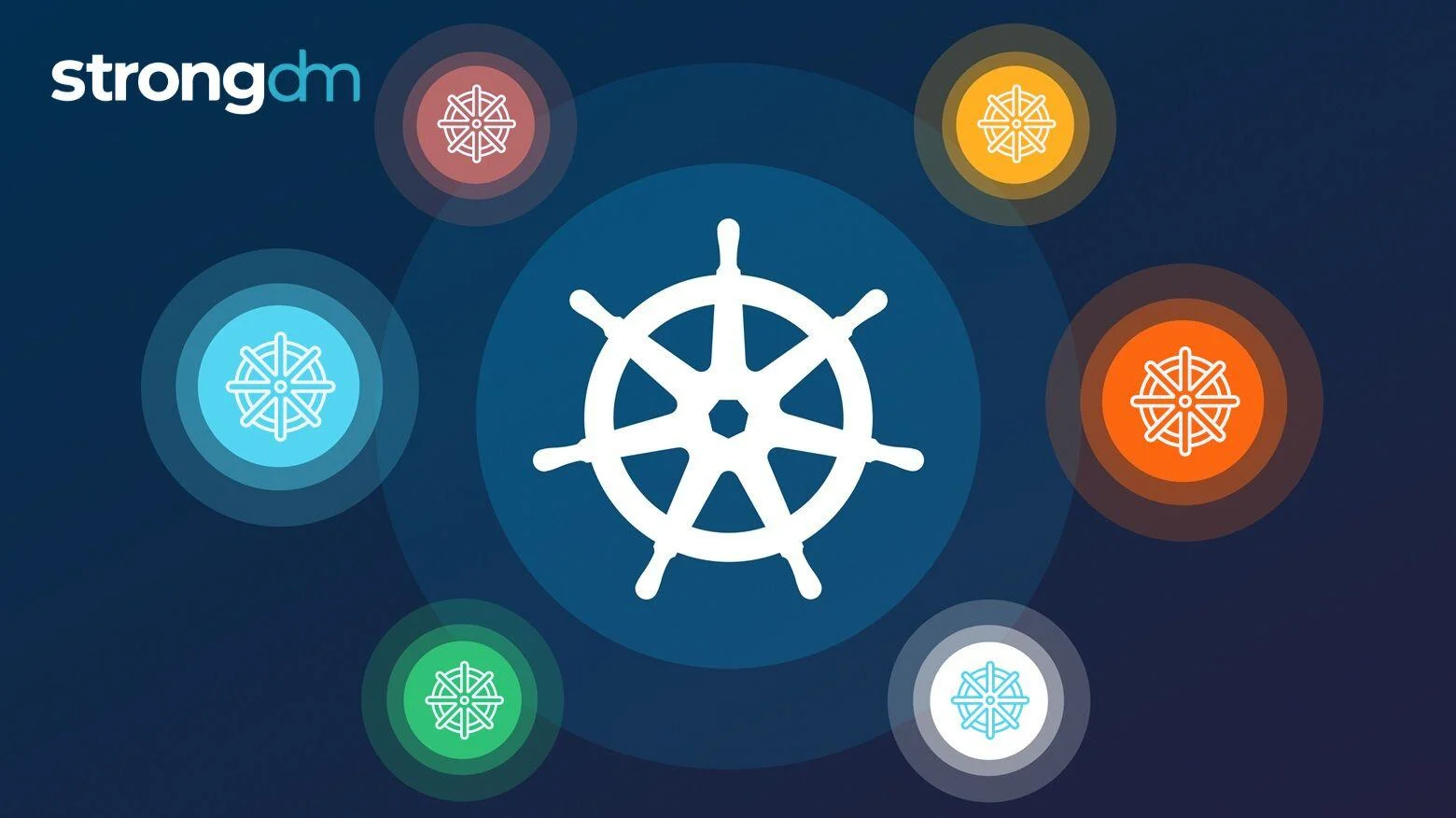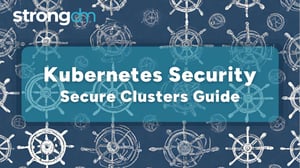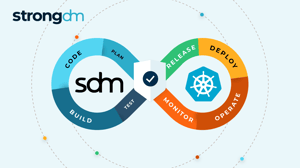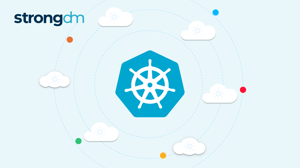

Written by
John MartinezLast updated on:
January 2, 2025Reading time:
Contents
Built for Security. Loved by Devs.
- Free Trial — No Credit Card Needed
- Full Access to All Features
- Trusted by the Fortune 100, early startups, and everyone in between
Kubernetes (K8S) has revolutionized software development, but managing such a complex system with numerous components can be challenging. Fortunately, there are several best practices your team can adopt to secure your K8S environment and reduce your attack surface. By implementing these Kubernetes security best practices, you'll not only enhance your cybersecurity defenses but also improve various other business processes.
1. Implement Role-Based Access Control (RBAC)
Role-Based Access Control (RBAC) is a highly granular access control method that restricts your users from certain assets based on their position within your organization. It grants users access only to the most essential resources they need to perform their tasks and reduces the likelihood of an unauthorized user gaining access to a Kubernetes node or cluster and then moving laterally to breach other assets.
RBAC should be prioritized as a Kubernetes security best practice. The process can take some know-how, so consider using a third-party solution with the expertise that can simplify the process.
💡Make it easy: StrongDM's Zero Trust Privileged Access Management (PAM) platform enhances RBAC by enabling detailed access controls and auditing capabilities. The result is more precise and secure access management, which allows organizations to give employees and authorized users access to only the assets required for their tasks.
2. Use Network Policies to Control Traffic
Network policies restrict which entities your pod is allowed to communicate with. Kubernetes bases its network policies on three identifiers, which serve as criteria for assessing whether you can share information between pods. They are:
- Other allowable pods
- Allowable namespaces
- IP blocks
With these policies, your team can monitor your network traffic and discern between active and permissible traffic, which helps you identify network anomalies and areas of unnecessarily granted permission. Security teams should implement network policies to regulate how your pods communicate and who they can communicate with so you can keep your network secure.
💡Make it easy: StrongDM's Zero Trust PAM platform lets you manage and audit your network policies, creating more consistent policy applications and yielding insights into potential vulnerabilities. The reporting tools help provide extensive audit trails as well.
3. Secure Secrets Management
Secrets are small objects of highly sensitive information. They can contain metadata, state data, and other critical details about the status of your system, including:
- Passwords
- SSH keys
- Certificates
- Security tokens
- Encryption keys
- API keys
Secrets allow access to higher permissions and further assets, so they're a favorite target of cybercriminals. It's safer to store them in a pod than in your code, but by default, Kubernetes doesn't encrypt secrets while they're at rest.
As one of your Kubernetes security best practices, you should implement encryption and secret management processes to restrict your secret access. Encryption is off by default, so configure it using the kube-apiserver process. This documentation from the Linux Foundation offers additional details.
💡Make it easy: The StrongDM platform provides secure secret management and restricted access mechanisms for secrets, ensuring they remain encrypted and accessible only to authorized entities.
4. Enforce Immutable Container Images
Container images are files with all the components needed to create a container. They possess the code and all the necessary dependencies to run it, and you can deploy them to multiple environments at once to run the contents of the parent image.
Container images are viewable, portable, and immutable, so they're useful for transmitting copies of the original container without allowing an opportunity for further changes. One Kubernetes security best practice is to enforce immutable container images so as to prevent runtime modifications that could introduce vulnerabilities.
However, since they're exact duplicates of the original, container images possess the same vulnerabilities as the containers from which they were derived, so take extra care to remediate any errors within them. More on that later.
💡Make it easy: StrongDM enables the deployment of only approved, immutable images. This gives fewer opportunities for attackers to modify the contents of your container, reducing your attack surface.
5. Continuously Scan for Vulnerabilities
Managing a Kubernetes environment requires continuous oversight and monitoring. Code errors, compromised credentials, and other factors can enlarge your attack surface, so vulnerability scans and penetration tests are essential for detecting and remediating any new vulnerabilities. Some common vulnerabilities to check for in your Kubernetes platform are:
- Misconfigurations
- Unpatched software
- Inadequate access controls
- Container vulnerabilities
Although container images can be more secure since they're immutable, they still possess the same defects as the parent image. Scan them for older vulnerabilities that you may have thought were resolved, and regularly perform vulnerability scans on all pods and clusters.
💡Make it easy: Our platform integrates with CI/CD pipelines to enable continuous vulnerability scanning and mitigation.
6. Adopt a Zero Trust Architecture
Kubernetes systems contain a large number of clusters and nodes, all of which can talk to each other. That makes it easy for attackers to move laterally across your network and cause damage, so it's simply too dangerous to assume an access request is authorized just because it's already on the inside.
Zero Trust architecture employ a "never trust, always verify" approach to network validation, and they're essential for securing Kubernetes platforms. There are better ways to do it than requiring users to log in again with every click, but Zero Trust PAM systems force your users to validate the legitimacy of their container interactions at every layer of their processes.
In addition to repeated authentication, a quality Zero Trust architecture framework will incorporate tactics such as microsegmentation, the least privilege principle, RBAC, frequent vulnerability scanning, and strict network policies. Employ all the tactics of a Zero Trust architecture to strengthen your cyber defenses and verify and authenticate everything attempting to connect to your K8S system.
💡Make it easy: Our platform supports Zero Trust procedures and policies. We enable you to enforce policy-based action control to monitor and evaluate all behaviors that happen within the environment.
7. Implement Least Privilege Access
Zero Trust architecture uses the least privilege principle to assess the legitimacy of access requests. This principle grants your users the bare minimum amount of access that they need to perform their tasks, preventing them from accessing unauthorized resources.
To optimize your Kubernetes cybersecurity, implement a least privilege-based access management system. Structure your permission levels according to the bare minimum access necessary for users to do their work, and disallow access to anything more.
💡Make it easy: StrongDM's Zero Trust PAM platform lets users implement the least privilege principle, facilitating more granular, context-aware access controls. The result is more restricted access to unauthorized resources and a lower risk of incurring a breach—especially from insider threats.
8. Monitor and Audit All Activities
Comprehensive reporting and auditing are already mandated by many compliance frameworks and will also benefit your Kubernetes processes. First, they help you identify existing vulnerabilities so you can remediate them and strengthen your security posture. They also enable faster incident detection and response to mitigate the damage caused by a breach. Strong reporting tools are especially important in helping you maintain regulatory compliance and can even keep you updated on your threat intelligence.
💡Make it easy: Our platform offers comprehensive monitoring and auditing solutions that provide real-time insights into your operations. These functionalities can enhance security posture, improve your threat intelligence, and boost your compliance with industry standards.
9. Use Multi-Factor Authentication (MFA)
Multi-factor authentication adds an extra layer of cybersecurity to your K8S platform. A simple password is no longer enough in today's threat landscape, and MFA requires users to provide additional information to log in to your system. Some common types of MFA are:
- SMS/email
- Authenticators
- Biometrics (fingerprints, retinal scans, voice patterns, user behavior)
- Digital Certificates
- Security Tokens
Research from Google has shown that MFA can reduce the likelihood of a breach by over 99% in some cases. The exact numbers may vary based on the configuration of your K8S environment, but one thing is clear: Integrating MFA into your Kubernetes system can significantly reduce the likelihood of a breach. If you want to strengthen your K8S system, you'll want to implement MFA.
💡Make it easy: StrongDM integrates MFA to enhance security at access points. This significantly enhances protection against unauthorized access, keeping your containers secure.
10. Regularly Update and Patch Clusters
Attackers often attempt to exploit long-standing vulnerabilities, especially those that could have been resolved with an update or patch. Stale Kubernetes containers may still possess these vulnerabilities, leaving your network exposed.
Updating your clusters and frequently applying patches are essential ways of remediating vulnerabilities. The exact frequency may vary with your application, but make routine patches and updates a part of your K8S security best practices. Automation can make this task easier by applying patches and updates at regular intervals, so use PAM solutions equipped with this feature.
💡Make it easy: Our system automates updates and patches. This eliminates vulnerabilities resulting from outdated code, and maintains your operational integrity in the process.
11. Harden Kubernetes Configurations
The control plane is one of the most critical components of the Kubernetes platform. It's responsible for defining, deploying, and otherwise managing the container lifecycle, so it's essential to implement as many layers as possible to harden it from attackers. There are multiple ways to harden your K8S configurations, but a few important tactics include:
- Requiring components to use Transport Sockets Layer (TSL) certificates
- Disabling anonymous login
- Configuring logging throughout the environment (for example, cluster API audit event logs, cluster metric logs, application logs, Pod seccomp logs, and repository audit logs)
- Isolating resources with restrictive network policies
- Limiting access to the etcd server
- Installing a firewall
- Using separate networks for control plane components and nodes
Additional hardening actions can be found within Kubernetes' documentation and on multiple industry standards and frameworks, so consult and implement those as you harden your configurations.
💡Make it easy: Our platform ensures your deployments comply with security standards, reducing misconfigurations and vulnerabilities within your K8S system's control plane.
12. Encrypt Data in Transit and at Rest
Some Kubernetes clusters may store data, and some may transmit it to other containers or pods. Attackers can intercept sensitive data as you transmit it from point A to point B, and data at rest within cluster components can become vulnerable if a breach should occur. There are unique challenges in safeguarding both, but encryption can protect your data no matter where an attacker should strike.
Encrypting your data makes it illegible to anyone without access to the decryption key. Even if attackers gain access to your network, they'll be unable to make use of your data if it's encrypted, so your most sensitive assets will remain secure. Strengthen your cybersecurity posture by encrypting your data both when in transit and at rest.
💡Make it easy: The StrongDM solution supports encryption standards for data at rest and in transit, ensuring comprehensive data protection.
13. Establish Comprehensive Backup and Recovery Procedures
Unfortunately, organizations can implement best practices throughout their K8S processes and still run the risk of a breach.
Since no cyber defense is impenetrable, companies must mitigate their risk of disruption by establishing thorough backup and recovery plans. That way, their business continuity can resume if an incident should ever occur.
As a Kubernetes security best practice, security and operations teams should implement a series of robust backup and recovery strategies that will maintain your most mission-critical processes in the event of a breach. These might include:
- Data replication
- Cluster recovery
- Storage restoration
A Zero Trust PAM system should empower many of these tactics, so be sure to leverage one that will strengthen your backup and recovery processes.
💡Make it easy: Our software facilitates the implementation and testing of backup procedures, ensuring quick recovery and minimal downtime.
14. Implement Pod Security Standards
Kubernetes' Pod Security Standards put forth three broad policies to outline where an organization's needs lie on the security spectrum. They are:
- Privileged: Provides the broadest possible level of permissions.
- Baseline: Allows the default (minimally specified) pod configuration.
- Restricted: The most heavily controlled policy, it follows current pod hardening best practices.
By applying Pod Security Standards to your K8S environment, you can lay a foundation for how to restrict pod behavior. This minimizes the risk of a breach or unauthorized lateral movement and enhances security across each pod and cluster in your environment. As you implement your Kubernetes security best practices, consider using the Pod Security Standards to lay out a broad framework for your operations.
💡Make it easy: StrongDM's solution enforces Pod Security Standards, ensuring all K8S components adhere to cybersecurity best practices.
15. Educate and Train Your Team
You can implement all the policies and tools you want, but none can override the human component. Human error is a key contributor to leading cyberattack tactics, such as social engineering or phishing attempts. The only solution is proper education and raising awareness, so if you truly want to implement Kubernetes security best practices, continuously educate your teams on the most important security protocols and the latest emerging threats.
💡Make it easy: Our platform furnishes your team with educational resources and tools. This keeps them current on proper cyber hygiene practices and raises their security awareness.
Elevate Kubernetes Security With Zero Trust PAM
The K8S platform contains many moving parts, all of which can talk to each other. Those factors make Kubernetes a very effective container management system, but they also make it difficult to secure. Thankfully, following Kubernetes security best practices can help you minimize your K8S attack surface and lock down the rest of your digital assets.
Many K8S security best practices are part of a broader security paradigm known as the Zero Trust Architecture. Legacy PAM systems may not incorporate these practices, but StrongDM's Zero Trust PAM has these functionalities baked in. Our software is complete with the capabilities needed to facilitate your implementation of K8S security best practices. Book a demo today.
Next Steps
StrongDM unifies access management across databases, servers, clusters, and more—for IT, security, and DevOps teams.
- Learn how StrongDM works
- Book a personalized demo
- Start your free StrongDM trial

Categories:

About the Author
John Martinez, Technical Evangelist, has had a long 30+ year career in systems engineering and architecture, but has spent the last 13+ years working on the Cloud, and specifically, Cloud Security. He's currently the Technical Evangelist at StrongDM, taking the message of Zero Trust Privileged Access Management (PAM) to the world. As a practitioner, he architected and created cloud automation, DevOps, and security and compliance solutions at Netflix and Adobe. He worked closely with customers at Evident.io, where he was telling the world about how cloud security should be done at conferences, meetups and customer sessions. Before coming to StrongDM, he lead an innovations and solutions team at Palo Alto Networks, working across many of the company's security products.
You May Also Like




